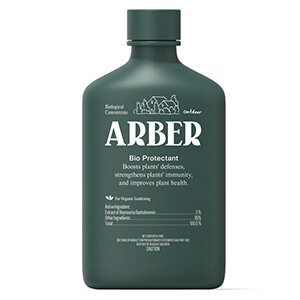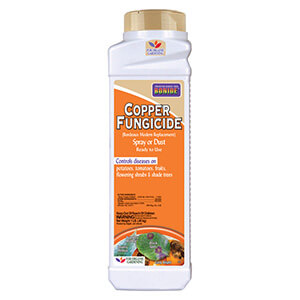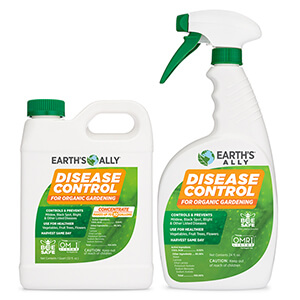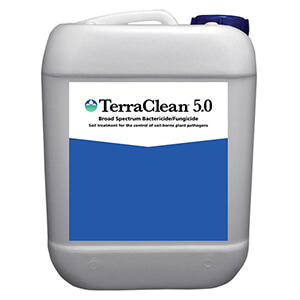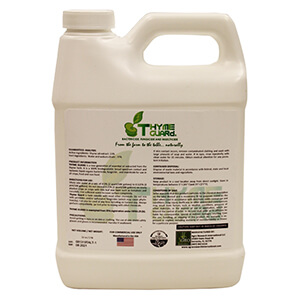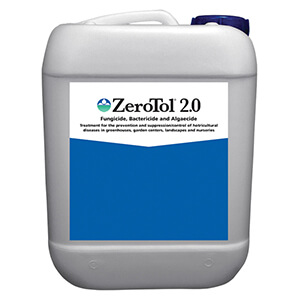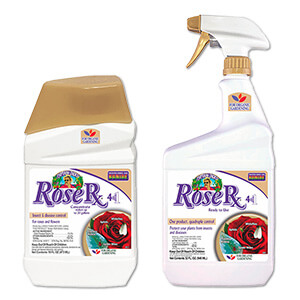Blight
The term "blight" refers not to one specific disease but is an umbrella term for a number of plant diseases with similar symptoms that present and spread quickly. Both outdoor and houseplants can be affected by blight. Plants suffering from a blight disease first exhibit lesions on leaf tissues, which is where the pathogen has entered the plant. The leaves will then begin yellowing, spotting, browning and withering, until finally dying off. Blights are not limited to the leaves, they can affect the flowers, fruit and stems - the entire plant, in fact. All of the blights will follow this general progression of disease, but particular blights may have specific characteristics in their symptoms. For instance, fire blight is so named because it's said the leaves look burnt, and shothole blight (aka coryneum blight) creates lesions that look like the leaves have been shot through.
Blights are caused by bacterial or fungal infections. There are thousands of plant pathogenic fungal diseases and are generally considered the most common plant ailments. This is not to downplay the effect of the bacterial pathogens, which is considerable. Pathogens that cause blight enter the plant through tears in the plant or leaf tissue or natural openings like stomata. Environmental and growing conditions are generally the cause of both types of diseases. Cool moist conditions that persist, changes in humidity and temperature, storms and high wind, and infected soil or seeds can all be contributing factors to blight.
Some of the many blights caused by bacterial pathogens are:
- Bacterial leaf blights (caused by Xanthomonas spp), which affects many common cultivars from carrots to rice
- Crown gall disease (caused by Agrobacterium tumefaciens), which affects more than 600 species of vegetables, weeds, trees and shrubs
- Early blight (caused by Alternaria spp), which affects tomatoes and potatoes
- Fire blight (caused by Erwinia amylovora), which affects pome fruits and mountain ash
- Halo blight ( caused by Pseudomonas savastanoi pv. Phaseolicola), which affects edible bean crops and bean seed crops
Some of the many blights caused by fungal pathogens are:
- Ashy stem blight aka charcoal rot (caused by Macrophomina phaseoli), which affects over 500 plant species, including cucurbits, soybeans and corn
- Botrytis aka grey mold (caused by Botrytis cinerea), which affects everything from cannabis to vine crops
- Chestnut blight (caused by Cryphonectria heterostrophus), an invasive disease which has devastated chestnut trees across the US
- Rhizoctonia root rot (caused by Rhizoctonia solani), which affects a wide range of plant species from legumes to ornamentals
- Southern blight aka white mold (caused by Sclerotinia sclerotiorum), which affects hundreds of crops, from sunflowers to cole crops and tomatoes
Due to the devastating effect and sheer number of varieties of blight diseases, treatment should be dealt with according to the variety of blight you're dealing with, the type of crop of crop you're growing, and your growing conditions. There is no one, simple solution. Nevertheless, there are some growing and treatment protocols that are beneficial across the board as follows:
- Crop rotation between common host plants and non-host species of plants
- Practicing strict sanitation - this means everything from cleaning tools to avoid cross-contamination to removing pathogens from the soil
- Proper watering - overwatering or poor drainage is a contributor to blights as they thrive in damp
- Proper air circulation - especially crucial in indoor or semi-indoor grows
- Thorough weeding, including removal of volunteers and post-harvest weeding. Care should be given to the proper handling of removed materials to avoid cross-contamination
- Well-balanced and consistent nutrition - many blights are associated with specific nutrient deficiencies
- Pruning to eliminate infected plant parts, but do so carefully to avoid harming plants that are not sick and use sanitized tools to eliminate spreading the disease or encouraging disease progression
- Keep plants as stress-free as possible
We have many excellent products that address both bacterial and fungal diseases in our Disease Control section. You may find what you need by simply scrolling through there, or you can try searching for a particular disease. You won't find every disease possibility out there, but the most important diseases are addressed in either a dedicated page or in a list of products. We also have a substantial Cleaning and Sanitation section that contains a selection of excellent products to fill that need.
Related Information:
-
$23.99
-
$23.99
-
$9.79–$15.99
-
$14.49–$15.98
-
$160.00–$290.00
-
$67.10
-
$143.50
-
$12.99–$23.99
-
$12.99–$23.99
-
$269.99
-
$302.00
-
$12.99–$29.99
-
$120.00
-
$12.99–$96.99
-
-
$14.99–$144.49
-
$230.00–$340.00
-
$260.00–$410.00
-
$279.99
-
$150.00–$420.00
-
$16.99–$270.00
-
$34.95–$395.98
-
$51.00–$240.00
-
$200.00–$360.00
-
$275.00
-
$32.97–$118.33
-
$230.00
-
$42.99–$154.76
-
$138.50
-
$140.00
-
$48.27
-
$10.99–$17.99


